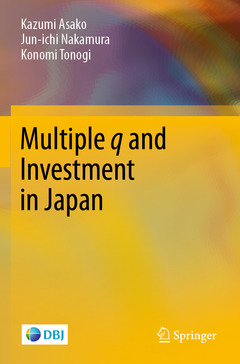Multiple q and Investment in Japan, 1st ed. 2020
Auteurs : Asako Kazumi, Nakamura Jun-ichi, Tonogi Konomi

In this book, a framework of the investment function is developed that allows for the heterogeneity of capital goods, i.e., the Multiple q model, and investment behavior in Japan by employing this Multiple q framework is developed. The standard approach to investment behavior is Tobin's q theory in which the investment rate is a linear function of only the q ratio, or a firm's market value measured by its capital goods. As is well known, however, its empirical performance has been almost universally unsatisfactory. Thus the development of a new framework.
The authors inquire into and statistically test null hypotheses set on such issues as (a) heterogeneity of multiple capital goods, (b) non-convex adjustment costs to inspire lumpy investment, (c) differences in the adjustment costs in accumulating capital stock through new purchases, second-hand market acquisitions, and large-scale repairs, and (d) capital market imperfections.
The test results show that, irrespective of the time period, firms? size, and the industry to which firms belong, (a) multiple capital goods are not homogeneous, (b) some firms face adjustment cost structures that eventually lead to occasional lumpy investment, (c) the method of acquiring investment matters in accumulating capital stock, and (d) capital market imperfections would constrain some lumpy investment.
This book is published in cooperation with the Research Institute of Capital Formation, Development Bank of Japan.
Date de parution : 08-2021
Ouvrage de 184 p.
15.5x23.5 cm
Date de parution : 08-2020
Ouvrage de 184 p.
15.5x23.5 cm



